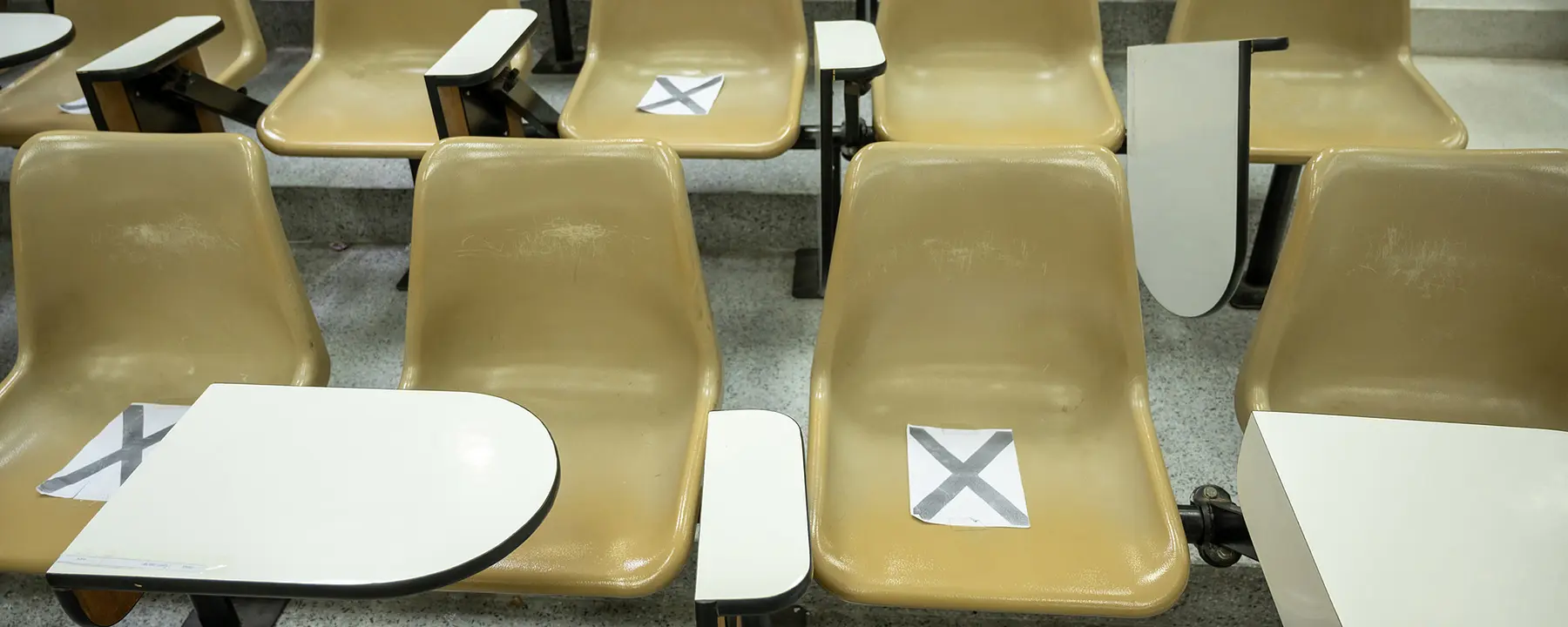A major national survey provides data on COVID-19’s financial and academic effects on students and institutions
In March 2020, the COVID-19 pandemic disrupted postsecondary education in the United States, creating uncertainty for many students returning from spring break and leading to the eventual transition of in-person classes to virtual experiences. With safety as the immediate concern, understanding the pandemic’s effect on student populations at a national level was a daunting task.
RTI International (RTI) was uniquely poised to measure the pandemic’s impact as the nationwide lockdown began. As part of our longtime implementation of the National Postsecondary Student Aid Study (NPSAS), we had just started collecting survey data on more than 173,000 students at 2,100 colleges and universities when the pandemic hit.
The NPSAS survey, completed every four years, tracks how students and their families pay for college in the United States. We quickly realized that in this year of disruption, it was critical to expand the survey’s scope. At the federal level, new legislation suspended federal student loan payments and granted emergency aid to institutions. These developments and guidance from multiple higher education experts formed the basis for our focus on student experiences during the pandemic.
Our researchers added a new series of questions to the survey, covering the following areas:
- Enrollment disruptions, such as classes being canceled or students withdrawing from school
- Housing impact, such as whether students moved home or had trouble finding a place to live
- Financial impact, such as whether students lost jobs or wages, received emergency financial aid, or had difficulty paying for food
- Whether students received refunds for tuition or room and board
- Students’ opinions of their educational institution’s response to the pandemic
Changing a large survey like NPSAS after data collection is already underway is incredibly complex, but our experienced and detail-oriented analysts were ready for the challenge. Meanwhile, members of our data collection staff were managing a quick transition to working remotely, away from their call center. So many aspects of the project were in flux, but the conducting this important initiative with the National Center of Education Statistics (NCES) was imperative.
Our enhanced efforts didn’t end with the data collection phase. Six months later, in summer 2021, we published a report on our findings. We accelerated our usual publication timeline while maintaining the rigorous statistical standards our clients expect. As a result, we provided reliable data to decision-makers at a critical moment.
Our report provides the first national estimates of how COVID-19 affected postsecondary students’ education and their ability to pay for it. Among the key findings are:
- 84 percent of all undergraduates experienced some or all their classes moving to online-only instruction due to the COVID-19 pandemic.
- 27 percent of undergraduates reported receiving a tuition refund from their institution, and 38 percent a room-and-board refund.
- 34 percent of undergraduates received technology or technical services from their institution to aid in transitioning to online instruction.
- 28 percent of undergraduates experienced a housing disruption due to COVID-19: moving back to their permanent address, moving to another living situation, or having difficulty finding safe and stable housing.
- 29 percent of undergraduates lost a job or lost income as a result of the pandemic.
- 70 percent of undergraduates agreed that their institution provided helpful communication on changes to accessing coursework due to the pandemic.
NPSAS is a mainstay at RTI, part of our suite of national postsecondary education surveys. Over our decades of research, we have uncovered various trends in the postsecondary experience, including the dramatic rise in student loans, an increase in military student populations, and the expansion of Pell Grants. When COVID-19 struck, we recognized an event more disruptive than any other, and we knew it would be vital to measure its effects. Because of our quick thinking and dedication to our work and our client, NPSAS expanded beyond its usual function to capture the changed reality of postsecondary education during the pandemic.
- National Center for Education Statistics (NCES)



